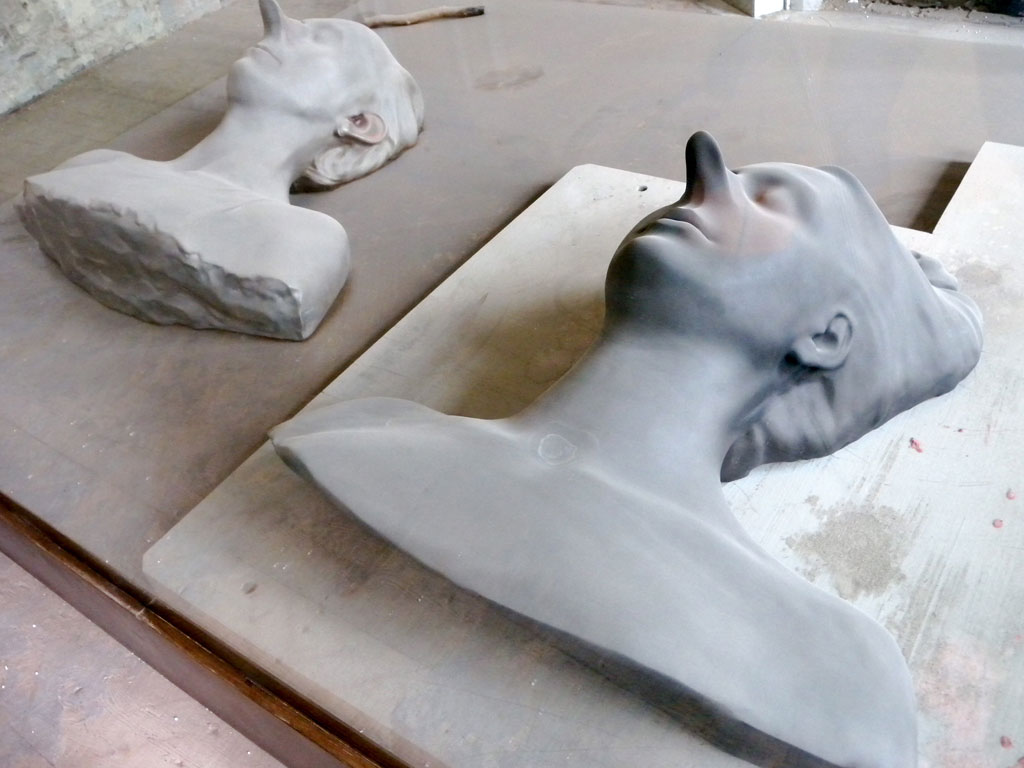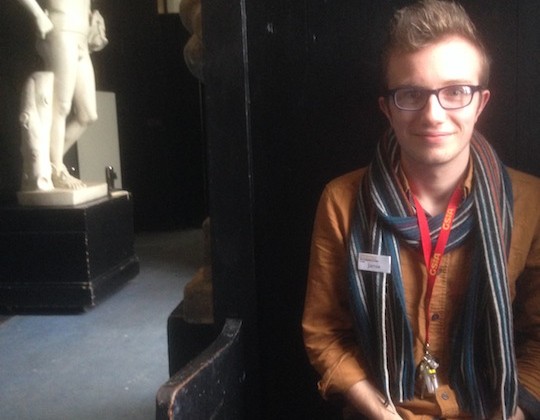
* Sometimes commissions go wrong. This was one. I was commissioned to write this piece during summer 2012 with a view to running it in the October issue of Metropolitan, the magazine for Eurostar. The the editor left, the piece got spiked and I didn’t get paid – that’s freelancing for you. But I did write it and, at least, I can run the copy here for those who helped with the trip and on-the-ground research.
The location, an unassuming house on Dijon’s Avenue Eiffel opposite a Casino supermarket, looks nondescript.
But beyond the green-iron gates is this month’s hottest art opening in France: the new studio of the Chinese-born, Dijon-adopted painter, Yan Pei-Ming.
The low-key opening by one of the most lauded contemporary artists is typical of Burgundy.
While Paris has well-established galleries for contemporary art clustered around Odeon and Bastille, Burgundy’s at scene remains relatively unknown, a discrete but revolutionary find in a region traditionally associated with the classical art of the 14th century Dukes of Burgundy.
But it’s contemporary work that is now sweeping Burgundy — from ephemeral installations in rural villages to bold-statement openings like L’ Usine, Dijon’s new contemporary art space unveiled quietly last summer.
Sherry Thevenot, who leads art-themed tours around the region with Burgogne Authentique, says:
“These artistic statements are a pleasurable surprise for visitors, a new canvas for artists and a boost to rural villages in Burgundy,”
We meet some of the faces behind the burgeoning Burgundian art scene.
L’ENFANT TERRIBLE
“I’m still an anarchist,” says Xavier Douroux, the founding father of the Burgundy art scene, swivelling playfully on his office chair on the top floor of L’Usine. “I like to make conflict if that conflict changes something for the better.”
Douroux was one of the founders of the groundbreaking Dijon art space, Le Coin du Miroir, in 1977. An art student with classical training but an anti-bourgeois streak, one of his first projects was to turn his student apartment into a gallery – and early take on the Consortium – and invite internationally known artists to show their work.
“Dijon is different to places like Lyon, Nantes or Lille as a reference point for contemporary art. That’s why we started here and we stayed here,” he says, a mass of grey curls piled higher on his head than the art books accumulating on his desk. He adds:
“The artists have created their own energy here. It hasn’t been programmed, it happened organically.”
Since those early punk-rock days, Douroux has become a focal point for the artistic community, currently juggling 15 new art projects around Burgundy alone with a further ten outside the region. He has been particularly active in taking art into dying rural communities, including creating a trail of installations around old lavoir, communal village washhouses.
Some of these isolated farming communities took some convincing that an art installation would enrich their environment. “Of course it takes time. You have to meet with the farmers, drink with them, and go fishing with them.
He smiles. “I’m not trying to convince people that contemporary art is the best thing in the world. I’m just happy we had an experience together.”
One of the latest initiatives is to open a private art space in the village of Vosne-Romanée, home to the world-renowned winemaker Aubert de Villaine of the Domaine de la Romanee-Conti. The space opens this October with work by the local artist Bertrand Lavier.
Also in October, L’Usine will host a new exhibition of works from the Consortium collection, including pieces by Francois Morellet amongst others.
Despite being increasingly as part of the art established with the ear of ministers and artists, Douroux is still proud of his anarchist streak. “Art is something free but it has energy,” he says.
“When we create art, it gives us energy to build new something new.”
THE CURATORS
Paris-based art school inspector Alain Gislot and art teacher Edith Bricogne found a ruined 17th-century chateau while holidaying in rural Burgundy in 1986. They decided to restore it and, by 2002, had turned the sprawling mansion into Arcade, a cutting-edge atelier for design.
The Chateau de Sainte Colombe en Auxois now hosts three major exhibitions each year, all based around a central theme, and attracts some 3,000 visitors annually to a formerly lost-in-time village some 60km northwest of Dijon.
“Of course it was pure folly,” laughs Alain, basking in autumn sunshine by a wicker seat with a tree growing through it, a living-chair installation by the artist Pascal Stemmelin. “We did it because we are passionate about design.”
“People are afraid of the word design,” he adds, “but we bring students from the major art schools here to guide visitors through the exhibitions and explain the ideas behind the pieces to make it more accessible.”
“I hope,” he adds, “we change perspectives.”
The current exhibition, Entrelacer: Des Lignes au Volume, based around the idea of interconnections, runs until October 14. It includes furniture, lighting and, notably, new work by the Paris-based textile designer Helene Pillet-Will. “I like the experimentation with new materials in these works,” says Edith. “They have soul.”
The new season starts in April 2013 with the exhibition Textiles du Monde, based around the concept of less is more. Le Jardin de Camille, a new permanent outdoor piece by the Burgundy artist Bernard Lavier was installed spring 2012 to recreate St Mark’s Square, the famous meeting point in Venice, next to the village’s Romanesque church.
Yet, despite support from the Burgundy art community, funding remains a major concern and the curators are now looking for a full-time director. Alan laughs.
“We have never taken a salary for our work. It’s crazy. We do it for the passion.”
THE COLLECTOR
Francois Barnoud runs his engineering business from an industrial estate on the eastern fringes of Dijon. But he’s also recently opened a new wing to his office block next door — and it’s no storeroom.
Entrepot Neuf is one of the most radical new spaces for art in Burgundy, a minimalist rectangular gallery dedicated to new and experimental artists.
A recent exhibition featured digital-media work by the Mexican artist Miguel Chevalier. This October, the gallery showcases collected works from Barnoud’s own private collection.
“My first passion was jazz but, when I went to the first international art fair in Paris in 1986, it struck me that, like there is genius in jazz, there must be genius in contemporary art,” says the softly-spoken President of Geotec, sitting behind a desk piled high with papers, proposals and the proofs of his first book.
“I simply started collecting what I liked. And I liked the fact that, by bringing provocative contemporary art to Dijon, it would shake up the city’s bourgeois mentality.”
Over the years, and after several previous forays into running art spaces in the city, including giving over his own home over to art in the Nineties, Barnoud has given early exposure to young artists who have gone onto to earn international plaudits.
The Cameroon-born artist Barthélémy Toguo was first shown by Barnoud, while the French artists Georges Rousse and Philippe Gronon both had early shows in his spaces.
But, while art is still — for now — generously support by the French Ministry of Culture, Barnoud has always rejected government grants in favour of private enterprise.
“A French company can use five per cent of its business turnover to buy the work of a living artist. If you show that work to the public, then you can assign the cost to your company accounts,” explains Barnoud.
He hopes Entrepot Neuf will convince fellow business leaders to join him in collecting and showing art.
“It’s always been an uphill battle convincing people to invest,” he laughs, “but I always rather enjoyed the fight.”
* Liked this? Try also Father’s Day in Burgundy.
And post your comments below.



